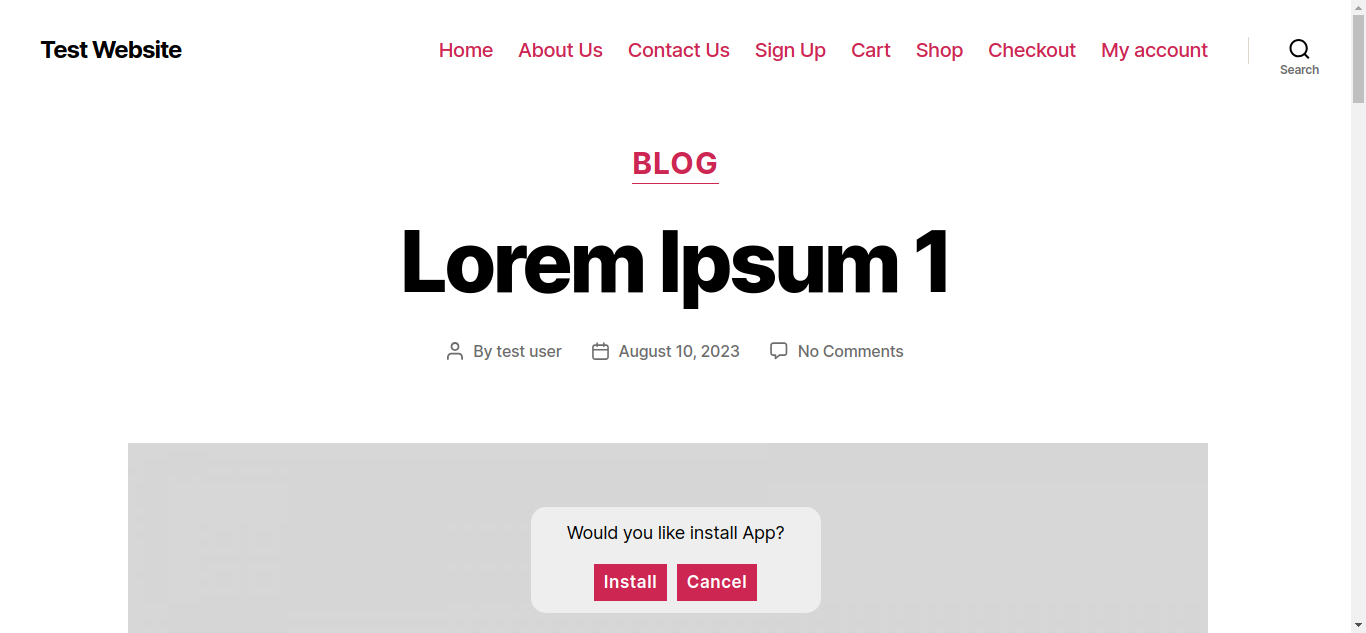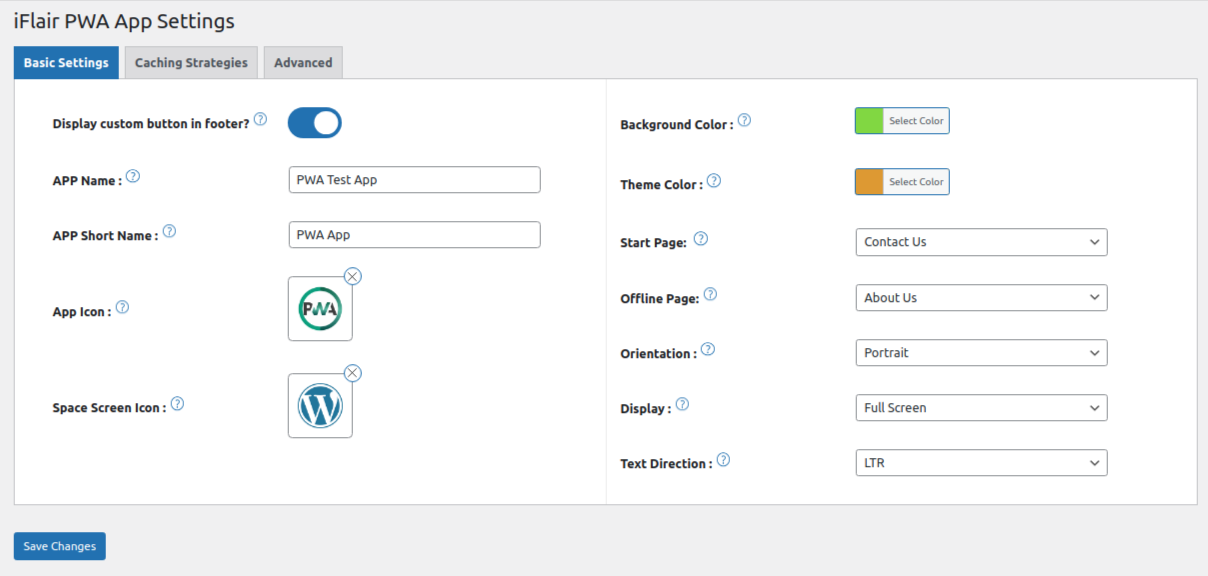
PWA App by iFlair plugin transforms your website into a Progressive Web App (PWA), enhancing user experience with app-like features such as faster loa …
| Author: | The iFlair Team (profile at wordpress.org) |
| WordPress version required: | 4.7 |
| WordPress version tested: | 6.4.4 |
| Plugin version: | 1.0.0 |
| Added to WordPress repository: | 24-04-2024 |
| Last updated: | 25-04-2024 |
| Rating, %: | 0 |
| Rated by: | 0 |
| Plugin URI: | https://profiles.wordpress.org/iflairwebtechn... |
| Total downloads: | 44 |
 Click to start download |
|
PWA App by iFlair plugin transforms your website into a Progressive Web App (PWA), enhancing user experience with app-like features such as faster load times, offline accessibility, and the convenience of adding the site to a smartphone’s home screen. It also offers customizable backend settings, allowing modifications to the app’s color, name, and more, ensuring a personalized and seamless integration.
Functionalities:
1) APP Name: The “App Name” typically refers to the name or title of the web application as it appears on the users’ devices, such as on the home screen, in the app launcher, or in the task switcher.
2) APP Short Name: The “App Short Name” refers to a shortened version of the application’s name used in places where space is limited, such as on the device’s home screen, in the app launcher, or in notifications.
3) App Icon: This App Icon is displayed on mobile devices.
4) Space Screen Icon: This Space Screen Icon is displayed on desktop devices.
5) Background Color: The “Background Color” property refers to the color displayed behind the application’s content.
6) Theme Color: The “Theme Colour” property refers to the primary color used to customize the browser UI elements to match the color scheme of the PWA.
7) Start Page: The start page refers to the initial webpage or landing page users encounter when they first visit a website or open a web browser.
8) Offline Page: An offline page is a webpage displayed to users when they attempt to access a website or web application while offline, meaning they don’t have an active internet connection and the requested page is not already cached.
9) Orientation: Orientation refers to the positioning or alignment of an object, typically about a reference point or axis.
10) Display: The “Display” property allows developers to specify how the web application will be presented to users when launched from the home screen or app launcher.
11) Text Direction: The “Text Direction” property allows developers to specify the direction in which text is displayed within the application. This property is particularly relevant for languages written from right to left (RTL), such as Arabic, Hebrew, and Persian, as opposed to languages written from left to right (LTR), such as English.
12) Caching Strategies Type: Caching Strategies refer to the methods used to determine how resources such as HTML files, JavaScript, CSS, images, and API responses are stored and retrieved in a web application. These strategies are crucial in optimizing performance, reducing network dependencies, and enabling offline capabilities, especially in Progressive Web Apps (PWAs) and applications utilizing service workers.
13) Pre-Caching Manual: This progressive web app plugin turns your website into a Progressive Web App (PWA). It offers pre-caching manuals for faster load times and offline access with customizable settings for a personalized experience.
14) Cache External Origin URLs: This plugin’s Caching External Origin URLs feature involves storing copies of resources (such as images, scripts, or stylesheets) from external websites or servers in a local cache. This caching mechanism helps improve website performance by reducing latency and server load, as the resources can be retrieved quickly from the local cache instead of fetching them from the external origin every time a user accesses the website.
15) Exclude URLs from Cache List: This feature is useful when you have specific resources you don’t want to be cached, either because they are dynamic or because caching them could lead to undesirable behavior. Separate the URLs using Comma(,).
Screenshots
FAQ
ChangeLog





